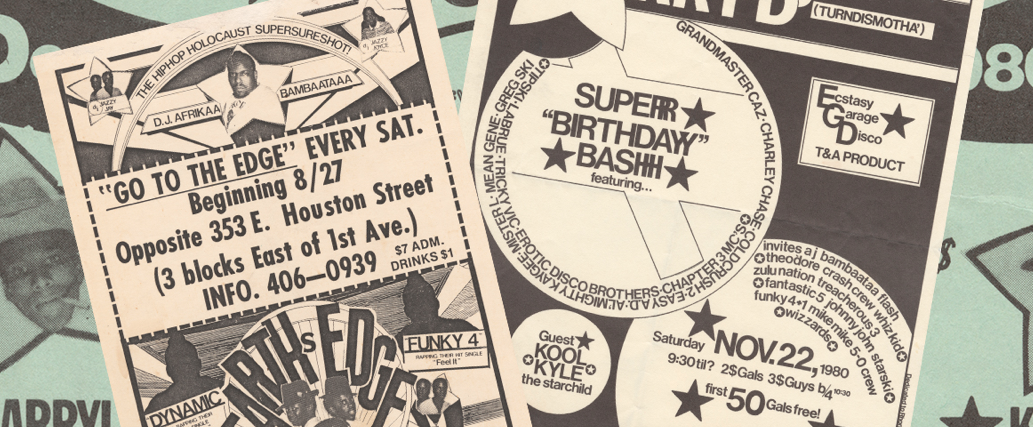Phase 2's bold 1970s-era hip hop flyers
At AIGA's Eye on Design, writer Jerome Harris looks at the history and range of influences, such as Jack Kirby comics, that led to unsung graphic designer PHASE 2 creating hand-distributed photocopied flyers "made from Letraset, markers, cut-up photographs, and glue" in the South Bronx of the 1970s.
Back then, loosely organized parties held in emptied or burnt-out buildings helped pave the way for hip hop culture.
A large portion of these flyers were the work of PHASE 2, a young artist from the Bronx who was becoming known as one of the best aerosol writers in the city, and who could often be found DJing, dancing, or rapping at the local nights. Recognizing a lack of promotional material surrounding jams, PHASE 2 asked hip-hop pioneer Grandmaster Flash if he could design a flyer for an upcoming event. The rest is history.
His flyers went well beyond pure promotional material, drawing influence from Art Deco, Jack Kirby comic books, Romare Bearden paintings, and manga.
While April Greiman was initiating the “New Wave” on the West Coast, PHASE 2 was having similar impulses on the east, pushing legibility, breaking the grid (as if a grid mattered to him to begin with), and working predominantly with sans serif type. In the mid ’80s, PHASE 2 began art directing and co-editing (alongside founder David Schmidlapp) the notorious street writing and subway art publication IGTimes. Its international distribution brought New York–style writing to city streets worldwide.
As Harris mentions in his piece, it's worth sifting through the hip hop archive hosted by Cornell University Library, the digital component of which features nearly 500 flyers for events that began in the mid-1970s. PHASE 2 remembers seeing flyers for hip hop events helmed by Jamaican-American DJ Clive "Kool Herc" Campbell before the term entered our lexicon.
Herc was creating instrumental breakbeats for dancing crowds by digging out drum solos on James Brown and Dennis Coffey records on two-turntable sets (with a couple of speakers powered by a guitar amp) in order to loop the percussion-heavy sections as far back as 1973. Herc and his sister Cindy were throwing parties that would roll well into the early AM hours in the recreation room of the building where his family lived on Sedgwick Avenue.
Joseph "Grandmaster Flash" Saddler, who used to peer in at the extensive record collection his father kept in the closets of his childhood home, would produce innovative DJ techniques that cemented his status as another pioneer of hip hop after having closely studied Herc's party routines.
From Harris's feature:
"The first hip-hop flyers that I consistently saw were for Kool Herc’s earlier ’70s jams, even before the term was insinuated. And, as I remember, they were by a brother named Kareem, and then it’s like he disappeared.""I will put it this way: When I went to Grandmaster Flash’s manager to suggest making flyers to advertise their jams, there really wasn’t anything like that happening, and that’s why I suggested it. What you did have were big Merengue posters by Salsa Kenny and Izzy Sanabria, but we weren’t really promoting jams on any real level like that. I thought that it made sense to, so I started doing flyers for Flash, and then the wave came behind it."
Read Harris's whole story on PHASE 2 at AIGA's Eye on Design, and buy the magazine. Visit Cornell University Library's hip hop archive.
